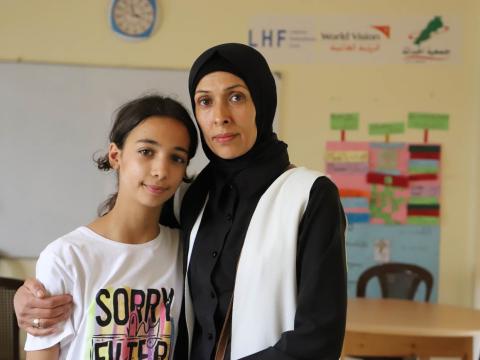Education as a Transformative Power: What keeps students at risk of dropping out in school?

By Elio Haddad, Education Technical Officer at World Vision Lebanon
Imagine sitting in the stadium of a football field during your favourite team’s practice. The players are all standing on the starting line. Under the midday sun, the coach places hurdles every 10 meters and asks players to overcome them through the drills they practiced. The coach shouts: “We will only stop when each and every one of you crosses the finish line.”
Now imagine sitting in a retention support session in Lebanon. Students are seated in parallel rows, but are actually miles away from the starting point – and from each other. Under the pressure of their caregivers to succeed, and the learning loss resulting from the economic crisis, the pandemic, and teachers’ strikes, the retention program is helping students overcome the academic, protection, hygiene, and financial barriers. You look to the wall and find a statement that reads:
“We will only stop when each and every one of you is retained in school.”
Reviewing any and every assessment of out of school children in Lebanon, one finds consensus that the academic challenges, the indirect cost of education, child labour and abuse, hygiene issues, and disability are among the top reasons of low retention rates. These findings lead to one conclusion: If we aim to retain students in school, we are to address every challenge faced by students.
Since the barriers of children’s education are not only academic, student retention can only be achieved through integrated programming that addresses all barriers. A recent example is World Vision Lebanon’s (WVL) intergrated education program in North Lebanon, where WVL targeted 2100 Lebanese and Syrian students with retention support, life skills, cash for education, and WASH services.
The holistic approach (education, cash, Child Protection (CP), and Water Sanitation and Hygiene (WASH) allowed students to be retained in their schools and perform better. This was achieved through each component eliminating certain barriers: the cash component reduced the financial burden families face, the retention component helped students overcome the academic challenges, the WASH component promoted healthy hygiene practices and provided females with menstrual hygiene kits to ensure equal opportunity, and the CP component helped to build resilience and enhance students’ wellbeing. This resulted in 89.4% of students getting retained in their schools.
As seen, education manisfests its transformative power when we transform our isolated education-only programmes to holistic, integrated, and adaptive ones. As such, the question of what keeps students in schools should be changed to:
- what keeps us from creating conditions that help students remain in education?
More specifically,
- what if the transformative power of education were to change what we provide our students with, long before changing what they are able to achieve?